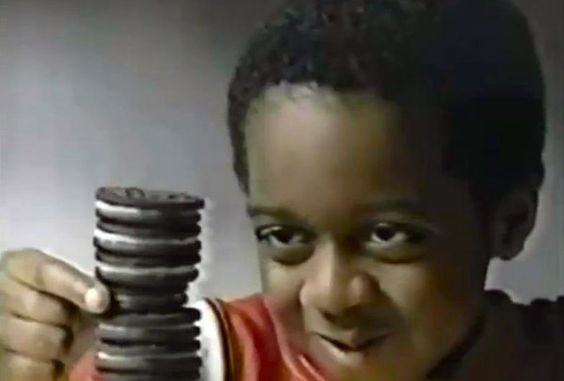
Jasmine Whiteside
Contributing Writer
Opinion Piece
It is hard to believe that it has only been fifty years since the plights and triumphs that occurred as a result of the Civil Rights Movement.
Ideas that centered around racial equity were viewed as sacrilege to many whites. Civil Rights Activists like Martin Luther King Jr., Medgar Evers, and Jimmie Lee Jackson were killed in cold blood for daring to place themselves at the forefront of the uphill battles that plagued the African-American community.
Despite this, the 1960s saw the emergence of Black Pride; it became a time for blacks to embrace their identity while disowning the stigmas and oppressive ideas associated with blackness.
In her essay, “An Oreo Ain’t Nothing but a Cookie…” Educator Rotha Perkins reveals that in many black students attending desegregated schools faced criticism, not only from whites, but their own communities as they attempted to adopt behaviors believed to be possessed predominantly by whites, in an effort to fit in to their new unsettling environments.
This is where the Oreo was born. Not the delicious cookie we’re all used to seeing in stores and on television, but a derogatory label meant to slur blacks spurned by those within their own community for showcasing ‘white mentalities’.
Black on the outside, white on the inside, hence the Oreo.
It has become the go-to slander for people of color that demonstrate interests, hobbies, or skills that go beyond what their respective culture is used to seeing within the community. Phrases such as “acting white”, coconut, bounty bar, and banana are utilized with similar intent; pro ling a person of color who apparently doesn’t t the stereotypical behaviors prescribed to their particular race or ethnicity.
What these labels do is reinforce damaging stereotypes and images that have too long been associated with minority groups and continuously reinforced throughout predominantly white-run and focused media outlets. Countless movies, shows, and even public gures have helped cement ideas that typecast specific racial groups.
Some of these ideas associated with being black include, but are not limited to, being loud, ghetto, and can dance, but are not well-educated.
If you’re Latino, there’s a good chance that you’re an illegal immigrant (or have some in your family), you don’t speak good English if at all, you come from a huge, circus of a family, and you’re either going to end up a maid or mowing someone’s lawn.
These are the types of stereotypes that are so deeply embedded into our culture that even when minorities attempt to overcome their dehumanizing consequences, they’re met with incredulity from within their own community.
Village Coordinator and junior Shaina War eld learned what it means to be deemed an Oreo at a very young age while attending John Hay Community Academy on the westside of Chicago in the Austin neighborhood.
“You become like this dissociative state where-Am I my body or am I what I like? And what does what I like mean for my body? What’s the relationship?”
“I was maybe in like kindergarten. The population was majority black. I probably just answered a question. In my class no one participated. No one really paid attention to the teacher,” she says.
“I was just going down a list of words correctly and someone was like, ‘she don’t count, she an Oreo.’”
Warfield doesn’t consider her experience unique. Speaking broadly on the experience of African- Americans, she comments on what it’s like for students of color in general to leave their neighborhoods and experience things that they wouldn’t ordinarily have access to if not for their exposure to upscale areas like River Forest.
“Going to Dominican, leaving your neighborhood and going to River Forest, leaving friends and family members who are not going to college, who are not experiencing any other economic or social advancement in any way, to go back home having experienced those things or at least having gotten a glimpse of those things you feel like an Oreo,” she states.
She goes on to explain this intersection of cultures in a way one would illustrate a sociological formula. Touching on how these con icting cultures can cause an individual to retreat into themselves in hopes of seeking comprehension.
She says, “Anytime those two worlds are interacting you make Oreos because this sense of cultural mixing happens. You become like this dissociative state where- Am I my body or am I what I like? And what does what I like mean for my body? What’s the relationship?”
These internalized questions that War eld calls attention to also speaks to an idea known as “double-consciousness”; a term coined by sociologist and civil rights activist W.E.B Du Bois in 1903.
Du Bois wrote in the book The Souls of Black Folk that double-consciousness was a feeling of “two-ness” for African-Americans: “two souls, two thoughts, two unreconciled strivings; two warring ideals in one dark body…”
Oreo may not have made its debut into American culture for another six decades following Du Bois bringing awareness to this idea, but both concepts still prove applicable to the experience of minorities to this day.
Higher education is just one of the many settings where people of color are forced to reconcile their identities as minorities and Americans.
Unfortunately for these individuals, Americanness often correlates to whiteness since the civil rights of minorities have long been abused and considered below that of whites. Therefore, embracing one of these characteristics is often perceived as neglecting the other and even those that attempt to prioritize their “American” identity might nd their e orts overshadowed by the misconceptions and stereotypes associated with their skin color.
As much as we would like to believe that yesterday’s racial trials are a thing of the past, they are much more prevalent within our current culture than we realize.
jwhiteside@my.dom.edu
*Updated to fix author’s name and grammar error from the editor*


